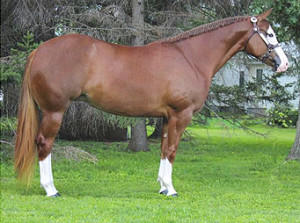Solid Paint-Bred Rule Change Gets Mixed Reviews
Click here to read the complete article196 – May/June, 2017
by Erica Greathouse
 THE HORSE HAS TO HAVE AT LEAST ONE OF THE NINE APPROVED PAINT CHARACTERISTICS:
THE HORSE HAS TO HAVE AT LEAST ONE OF THE NINE APPROVED PAINT CHARACTERISTICS:
1. White leg markings extending above the knee and/or hock
2. Glass, blue, or watch eye(s)
3. Apron face or bald face, described as outside a line from the inside corner of the eye to the inside corner of the nostril
4. White on the jaw or lower lip
5. Blue zone around “a natural paint marking”
6. Two-color mane, one color being natural white
7. Dark areas or freckles in white hair on the face or legs
8. White areas in the non-visible zone, excluding the head, completely surrounded by a contrasting color
9. A contrasting color of another color in the non-visible zone including the head, on the predominately white horse.
At the 2017 APHA Convention, held in Fort Worth, Texas in late February, members of the Paint industry came together to brainstorm, discuss, and pass or defeat many rule change proposals. One of the rules that passed has elicited a wide range of responses, both positive and negative. The discussion stems from amendments to RG-070, which will allow a solid paint-bred horse to advance to Regular Registry, providing the horse meets three areas of criteria. The first requirement is that the horse must have a sire and dam with APHA papers (this includes solid paint-bred horses). Second, the horse has to have at least one of the nine approved paint characteristics. (see above list)
Finally, the horse must test positive for a genetic Paint marker, which is confirmed through a hair test. If all three criteria are met, the horse will receive Regular Registry papers.
According to APHA Executive Director Billy Smith and Senior Director of Member Care Jessica Hein, APHA will be opening their registry within the next few weeks to horses that meet all three criteria. “In the long run, we believe this rule will help increase Paint color genetics in the breed,” Hein says. So far, there are nine known Paint pattern genes that a horse can be tested for through the hair test conducted at an APHA approved lab. “If a horse carries at least one of the genes and meets the other two criteria, that horse has the same likelihood, genetically, of passing on Paint genes as a horse with a more colorful expressed pattern. We are using genetics to help us preserve that Paint color for future generations,” she says.
The narrative behind this rule going into Convention focused on solid paint-bred horses, but in the end, Smith maintains that this rule is really about retaining color in the breed and reducing the risk for breeders. “We’re encouraging Paint-to-Paint breeding, and our hope is that this will perpetuate more color in the future,” he says. Smith acknowledges that the risk of breeding Paint Horses puts people in the position to consider breeding double registered horses, since the resulting cross will get AQHA papers, regardless of color.
Click here to read the complete article196 – May/June, 2017










